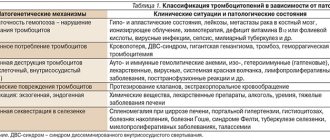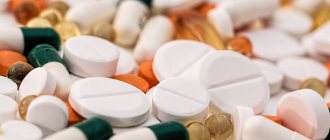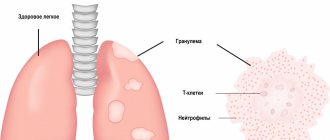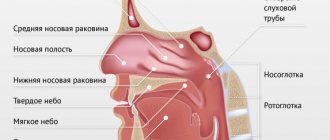Published: 07/30/2021 12:45:00 Updated: 07/30/2021
Gilbert's syndrome is the most common form of hereditary pigmentary hepatosis, characterized by impaired bilirubin metabolism due to a genetic defect in microsomal liver enzymes. Often the disease is asymptomatic for many years, but under the influence of provoking factors intermittent jaundice, dyspeptic and asthenovegetative disorders can occur.
Diagnosis requires collecting a family history, laboratory and instrumental studies. In the treatment of Gilbert's syndrome, medications of different groups are used.
Gilbert's syndrome according to the ICD corresponds to code E80.4. Men suffer from this disease four times more often than women. In general, the prevalence of pathology in European and Asian countries does not exceed 5%.
What is Gilbert's syndrome
Gilbert's syndrome (familial cholemia, constitutional hyperbilirubinemia) is a hereditary disease in which excess amounts of indirect bilirubin accumulate in the blood. This substance causes the appearance of jaundice. The syndrome itself can hardly be considered a disease, since it does not cause any subjective sensations, and jaundice may not appear at all. Histologically, the liver of people with Gilbert's syndrome is healthy, the existing changes are minor. Despite this, statistical patterns have been found in which people with Gilbert's syndrome have increased risks of certain diseases and at the same time decreased risks of others, which patients need to be aware of.
- Gilbert's syndrome is the most common hereditary liver disease.
- The probability of inheriting the disease depends on the genotype of the parents and can be 0, 25, 50 and 100%.
- The disease first makes itself felt between the ages of 12 and 30 years.
- Most often, treatment is not necessary.
- The combination of Gilbert's syndrome with other liver diseases can complicate their course.
Pityriasis rosea in children
Pityriasis is diagnosed in children over 5 years of age. The dermatologist prescribes antihistamines and multivitamins to patients, which restore the immune system. For children under 2 years of age, the doctor prescribes antiseptics and zinc ointment.
Children with weak immunity are susceptible to pathology in the fall and spring. The disease is diagnosed more often in girls, less often in boys. Rashes are rare in infants. The reason is overheating or hypothermia of the baby.
Causes of skin disease:
- allergic reactions to foods or fabrics;
- intestinal disorder;
- depression, emotional turmoil;
- insect bites.
The specialist will recommend medications to speed up recovery. The disease period is up to 2 months. To destroy microorganisms, it is necessary to take antibiotics, and for allergies - antihistamines. At high temperatures, the doctor prescribes antipyretic tablets.
Symptoms of Gilbert's syndrome
The main symptom that indicates the disease is periodically occurring yellowness of the sclera, the skin of the palms and feet, the ears and the nasolabial triangle. The appearance of symptoms is probabilistic. Usually occurs against the background of physical activity, emotional stress, fasting, menstruation or an infectious disease. Often the syndrome does not produce symptoms at all, then it can only be suspected by chance - by detecting an excess of the normal value of the concentration of indirect bilirubin in the blood.
More rare symptoms include the following:
- Mild pain and feeling of heaviness in the right hypochondrium.
- Bloating.
- Nausea, loss of appetite, belching, a feeling of bitterness in the mouth are symptoms of dyspepsia.
- Stool disorders: constipation or diarrhea.
- Increased fatigue, dizziness, decreased mood - astheno-vegetative syndrome.
- Formation of pigment spots on the skin and xanthelasmas of the eyelids.
However, the listed symptoms may be the result of other diseases and they may be accidentally attributed to manifestations of Gilbert's syndrome. In addition, research¹ has shown that these symptoms are not directly related to elevated bilirubin levels.
Figure 1. Skin and eyes of a healthy person and a patient with Gilbert's syndrome. Image: solar22/Depositphotos
Varieties of pityriasis rosea
- Typical form. It is formed from the mother's plaque.
- Antitypical shape. There is no redness, but vesicles and blisters appear on the body. Itching appears and spreads to the face; this is not typical for a typical pathology. A rash is observed, small bubbles form, which merge into one whole, the size is 10 cm.
The flaky atypical form has several stages:
- itching on the skin, small rashes;
- the formation of papules that have a rough, fine-grained surface;
- Whole lesions are observed, they are noticeable among uninfected areas of the skin.
Treatment of Gilbert's syndrome
In the absence of symptoms, Gilbert's syndrome does not require special treatment. But in the case of pronounced symptoms, therapeutic measures are taken depending on its severity and laboratory parameters.
During an exacerbation, attention is first paid to diet. Long breaks in eating are prohibited, drinking plenty of fluids. It is recommended to exclude from the diet:
- Fatty varieties of beef, lamb, pork, poultry (goose, duck), fish (sturgeon, catfish), as well as broths based on them.
- Coffee, cocoa, cold drinks.
- Confectionery with cream, chocolate, ice cream.
- Fresh bakery products from butter dough.
- Sour fruits and berries.
- Mushrooms, sorrel, spinach, pickled vegetables.
- Canned food, smoked products.
- Mustard, horseradish, pepper.
- Legumes.
Physical activity and sun exposure are reduced to a minimum.
In case of exacerbation of the disease, it is recommended to exclude confectionery products. Photo: wayhomestudio / freepik.com
Drug treatment
The list of medicines used is small. Prescribed:
- Phenobarbital. The drug has an inducing effect on UDP-glucuronyltransferase, the activity of which is reduced in the disease. In this way, they try to reduce the concentration of bilirubin in the blood.
- Lactulose and dioctahedral smectite. These drugs are prescribed with the aim of normalizing intestinal function and adsorption of bilirubin metabolic products.
- Ursodeoxycholic acid. This substance is part of bile and ensures its liquid state. The drug is used to prevent gallstone disease.
Additionally, vitamins (vitamins A, E, B vitamins, folic acid) and drugs for the correction of dyspeptic syndrome (aluminum hydroxide, magnesium hydroxide, domperidone, etc.) may be prescribed.
It is worth emphasizing that treatment is usually prescribed to patients with concomitant diseases or pronounced symptoms. Drug treatment is usually not required, so you should not try to take these medications on your own. The need for this can be dictated solely by the attending physician.
Prognosis and prevention
The prognosis for the disease is favorable. Most people do not experience any discomfort associated with Gilbert's syndrome. Any complications or long-term consequences are unlikely. Prevention measures include vaccination against hepatitis A and B and taking hepatoprotectors.
How to prevent exacerbation?
To prevent the appearance of symptoms in the future, it is enough to follow the following instructions:
- Avoid long breaks between meals.
- Follow your doctor's diet recommendations.
- Engage in physical activity regularly.
- It is rational to take medications for other diseases strictly as prescribed by the doctor, and not to self-medicate.
- Try to minimize the number of stressful situations.
- To prevent gallstone disease, take ursodeoxycholic acid once a year for 1 month.
Pityriasis rosea during pregnancy
The appearance of pityriasis is frequent with hormonal changes in the patient’s body or with a reaction to any foods. The pathology can be dangerous for the health of mother and baby, but it causes discomfort, itching and spots appear. The cause of the disease is weak immunity.
During lactation, women are not prescribed hormonal or antiviral drugs. When itching occurs, the dermatologist prescribes antihistamines, taking into account the woman’s condition. Ointments containing zinc are prescribed as external agents.
In pregnant women in the early stages, lichen has a negative effect on the fetus, since the disease is infectious. The child will not be able to become infected, but there is a possibility of miscarriage or the birth may be premature. Patients who are up to 15 weeks pregnant are susceptible to infection.
If lichen appears, you should consult a doctor. He will prescribe antihistamines in case of swelling, antibiotics if the disease causes complications. He will also prescribe vitamins C, A, B. Sedatives will need to be taken if there is a risk to the fetus. Taking medications on your own is not recommended, as this may have a negative effect on the child.
Complications of Gilbert's syndrome
People with Gilbert's syndrome have an increased risk of gallstone disease, so it is advisable to periodically monitor the condition of the gallbladder in order to detect stones in time.
It is also known that the combination of hemolytic blood diseases (thalassemia, hereditary spherocytosis, sickle cell anemia) and Gilbert's syndrome is prognostically unfavorable, since in this case accelerated destruction of red blood cells occurs. Accordingly, the load on the liver increases due to the increased formation of indirect bilirubin. In such patients, hemolytic jaundice occurs more aggressively than in those who do not have the syndrome. In newborns, this combination of diseases can lead to kernikterus - malignant jaundice with brain damage.
Yellowness of the skin is the main symptom of Gilbert's syndrome. Photo: DermNet (CC BY-NC-ND 3.0 NZ)
It is also possible for jaundice and drug-induced liver damage to occur when taking certain medications. The drugs may compete with indirect bilirubin for the glucuronyl transferase binding site, causing an even greater increase in bilirubin in the blood. In addition, a number of drugs are metabolized by this enzyme, so if its activity is reduced (as in people with Gilbert's syndrome), alternative metabolic pathways come into play. Products formed in these pathways can be toxic to the liver and can cause liver damage (drug-induced hepatitis).
The increased level of bilirubin in the blood of patients with Gilbert's syndrome gives them certain benefits. Acting as an antioxidant, bilirubin can have a protective effect. Such people have a reduced incidence of coronary heart disease and the likelihood of malignant neoplasms. This applies not only to Gilbert's syndrome, but also to other conditions in which bilirubin levels are elevated.
List of sources
- Diseases of the fetus and newborn, congenital metabolic disorders / ed. R. E. Berman, V. K. Vaughan. M.: Medicine, 1991. 527 p.
- Podymova S. D. Liver diseases. M.: Medicine, 1993. - 544 p.
- Kolyubaeva S.N., Kulagina K.O., Petrova I.S., Krivoruchka A.B., Ivanova A.M. Molecular genetic diagnosis of Gilbert's syndrome using pyrosequencing. Laboratory of health care facilities. 2016; 8:4–6.
- Goncharik I.I. Gilbert's syndrome: pathogenesis and diagnosis / I.I. Goncharik, Yu.S. Kravchenko // Clinical medicine. - 2001. - No. 4. - P. 40-44.
- Kuznetsov A.S., Fomina I.G., Tarzimanova A.I., Oganesyan K.A. Differential diagnosis of benign hyperbilirubinemia // Clinical medicine. - 2001. - No. 3. - P. 8-13.
Diagnosis of Gilbert's syndrome
A doctor may suspect the disease by examining the skin and palpating the abdomen, revealing characteristic jaundice and, possibly, a slightly enlarged liver.
Diagnosis of the disease must be very careful, since jaundice and increased blood bilirubin may also indicate such serious diseases as:
- Chronic persistent hepatitis.
- Cirrhosis of the liver.
- Cholelithiasis.
- Blood diseases - hemolytic anemia.
- Other hereditary liver syndromes (Crigler-Najjar, Dabin-Johnson, Rotor).
To weed out these diseases, a number of studies are carried out:
- General blood analysis.
- Blood chemistry.
- Ultrasound of the liver, gall bladder, pancreas and spleen.
- Stool examination (coprogram).
- Additionally, blood clotting parameters are examined and reactions to antibodies to various hepatitis viruses are performed.
Gilbert's syndrome requires careful diagnosis to exclude serious diseases. Photo: kliver00 / freepik.com
Is Gilbert's syndrome common?
The prevalence of this disease ranges from 4 to 16%¹ depending on the population. Thus, we can say that this is one of the most common hereditary diseases. The syndrome usually manifests itself in adolescence. It is during this period that a change in the concentration of sex hormones in the blood occurs, which affects the exchange of bilirubin (its concentration in the blood increases). It is also reliably known that symptoms occur 3-4 times more often in men than in women. This is due to the inhibitory effect of testosterone on the enzyme (UDP-glucuronyl transephrase), the activity of which is affected in patients with Gilbert's syndrome.
Causes of Gilbert's syndrome
The reason lies in a mutation in the gene responsible for encoding a group of enzyme proteins called glucuronyltransferases. Defective proteins do not fully perform their function - transform indirect bilirubin into direct bilirubin. For this reason, an excess amount of indirect bilirubin accumulates in the blood, which easily penetrates into the tissues, since it is a fat-soluble substance, while coloring them yellow.
How is Gilbert's syndrome inherited?
The type of transmission is autosomal recessive. This means that carriers of an incomplete mutation are healthy, but can pass on their mutant gene to their children, while those who inherited 2 mutant genes from their parents are sick. In this regard, the following conclusions can be drawn:
- The disease is transmitted to children in 100% of cases if both parents are sick.
- In 50% of cases, if one parent is sick and the other is a carrier of the mutation.
- In 25% of cases, if both parents are healthy but are carriers of the mutation.
- It is not transmitted if one of the parents is healthy and is not a carrier of the mutation.
To recognize carrier status, you can consult a geneticist.
Most frequently asked questions from patients
What causes pityriasis rosea?
There is no clear answer to this question. Research continues. Presumably, the cause may be herpes virus type 6 or 7. When immunity decreases, it becomes more active, which triggers the process of various types of rashes (plaques, vesicles, blisters). The disease can be triggered by stress, poor ecology, hormonal fluctuations, and chronic diseases.
Is pityriasis rosea contagious?
Pityriasis rosea in humans is considered non-contagious, but rare cases of the disease affecting entire families are known. Much depends on the state of the immune system and the body’s defenses, which can resist viruses, bacteria and infections.
Is it possible to sunbathe with pityriasis rosea?
One type of therapy for this dermatological disease is light therapy. Moderate exposure to ultraviolet radiation has a positive effect on the condition of the skin, stimulating its regeneration. Combustion must not be allowed. This will lead to increased itching in the area of the spots.
What is bilirubin?
Bilirubin is the main blood indicator if we are talking about Gilbert's syndrome. It's time to talk about what it is. It is a pigment that is the end product of heme metabolism. Heme is part of hemoglobin (Hb), a protein responsible for transporting oxygen in the blood. The largest amount of hemoglobin is found in red blood cells. The latter circulate in the blood for 120 days, after which they are destroyed in the spleen. Hemoglobin is broken down into heme and globin (a protein compound). The body can reuse the protein, but the heme is recycled. At the same time, it undergoes enzymatic transformation first into biliverdin (green pigment), and then into bilirubin (orange pigment). Next, the resulting bilirubin is transported in combination with albumin (blood transport protein) to the liver.
Bilirubin is a toxic fat-soluble substance in high concentrations that can accumulate in tissues, so the body disposes of it as waste. To reduce toxicity and remove this compound from the body, it must first be neutralized. For this procedure, the liver contains an enzyme that can convert fat-soluble bilirubin (indirect, unconjugated) into water-soluble (direct, conjugated). The latter is included in the composition of bile and leaves the body through the gastrointestinal tract.
Figure 2. Metabolism of bilirubin. Image: Sakurra/Depositphotos
Classification
In the case of this pathology, the doctor does not experience difficulties with classification. Gilbert's syndrome has a single form of the disease and therefore it is not accepted to officially classify it. But for convenience, the diagnosis can reflect its most striking symptom or absence of symptoms, thus indicating the clinical variant of the course. In accordance with this, we can distinguish variants of the disease:
- Dyspeptic.
- Asthenovegetative.
- Icteric.
- Latent.
The time when symptoms appear is called the period of exacerbation of the disease, and when there are no symptoms, they speak of remission or latent period.









